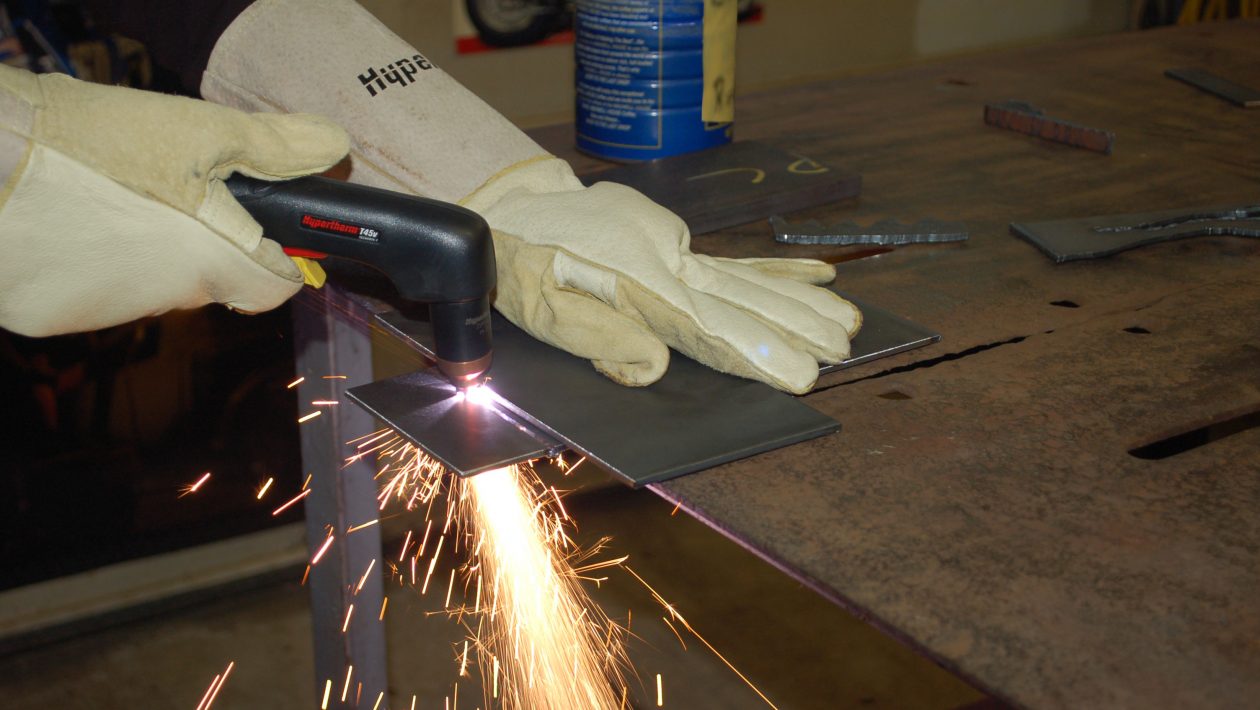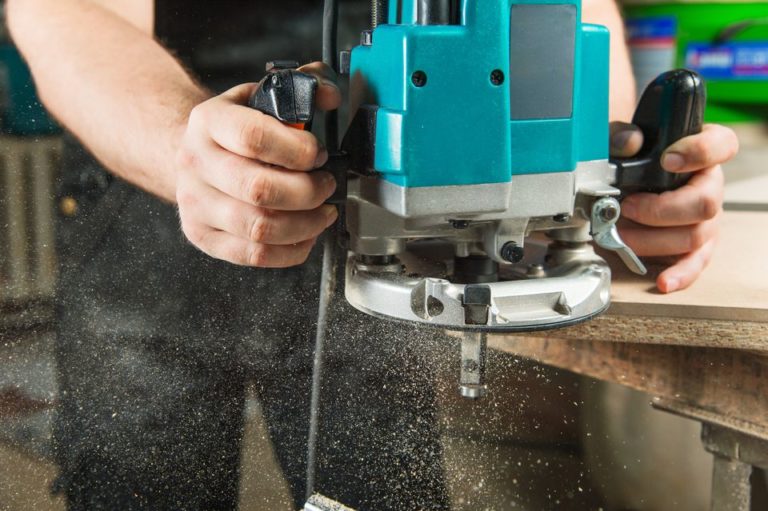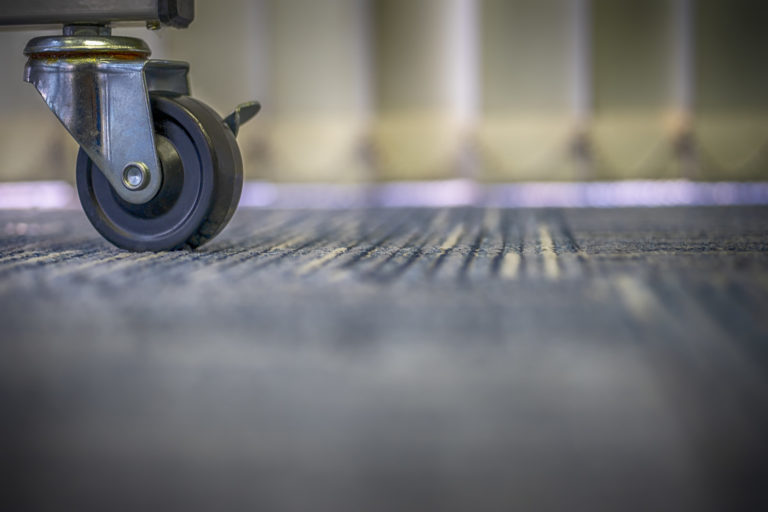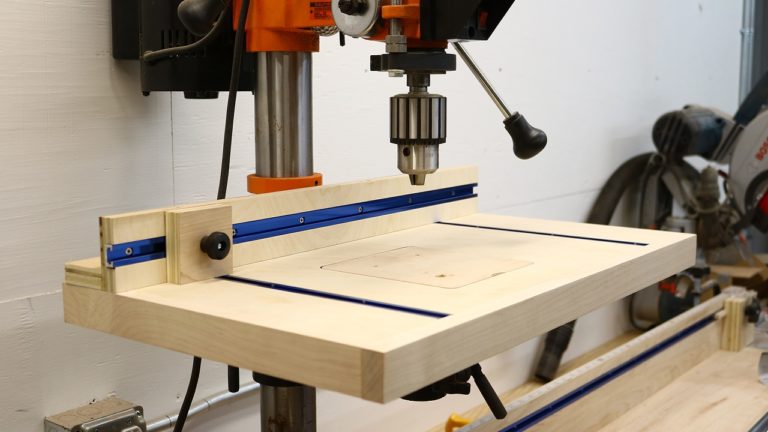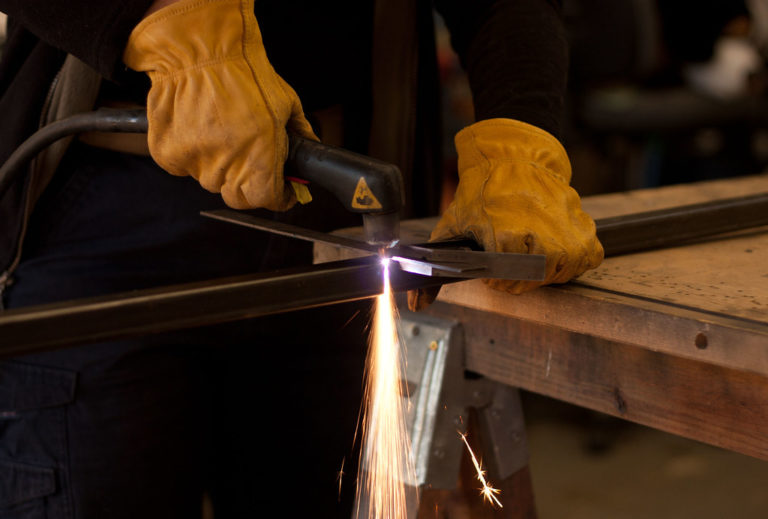How to cut metals with a plasma cutter
Whether you are a hobbyist or a professional metalworker, it is likely that you do not use more than 2 metals during the average day.
Extend this over weeks and years and you’d realize that your skills are – for want of useful work – being restricted to a certain set of metals.
You may want to explore new avenues, or may be forced to try out new metals for a somewhat different task. Whatever be the case, it is always wise to know how to cut the most common metals using a plasma cutter.

While exact procedures would vary depending on your own preferences, we’ve listed below the methodical tips involved in plasma cutting for different metals.
Steel/Stainless Steel
Given that one of the benefits of using a plasma cutter is that you can cut steel/stainless steel with ease, it makes sense to begin your journey into the world of cutting with steel. While the process does not deviate a lot, there are a few tips that should be kept in mind:
- Always use a ventilator when cutting with stainless steel. Otherwise the fumes might cause minor conflagrations to occur.
- It is best to use a contact torch instead of a pilot arc one since the amount of heat produced during steel cutting makes free wielding of the torch unadvisable.
- Since stainless steel is one of the hardest metals one will normally come across, it is important that mild pressure is maintained on the metal at all times to prevent the tip from losing contact with the metal. Though pilot arc cutters will still continue to cut, the change in the intensity of the flame would make the cut a highly uneven one.
- Again since stainless steel is very hard, it is important to cut at a slow pace even if you can go at a faster one. If needed, one can pause after only a few inches in order to allow both the metal piece and the tip to cool down a little.
- Many a times steel or stainless steel will contain impurities or small layers of coating (eg. glaze) that will block the tip. Such blockage has the potential for causing the arc to become erratic and thus ruining the cut. To avoid this, one should pause the cutter after every few inches and clean out the tip with a metal bit.
Aluminium
For a long time those who learned the basics of how to use a plasma cutter were told that their procedures were not meant for aluminium because of the chemical characteristics of the metal. However, using some special procedures, the modern plasma cutters can easily cut through aluminium and in doing so, produce clean, weld-ready edges.
- One of the common mistakes made by users is to use compressed air with aluminium. Air tends to form a film of aluminium oxide along the cut edge and this gives an unpleasant look to the metal. Instead, choose a helium/argon mix for better results.
- Once you’ve set up the compressed helium/argon mix dispenser, you can set up the metal on the cutting table followed by the torch. Mark out the area you wish to cut.
- Set the amperage to an unit between 130 and 260 amps. For those seeking the right balance of speed and quality, 130 amps is advisable. Start the unit and wait for the plasma to begin cutting the metal.
- Once the metal begins moving through the surface, try to maintain a relatively fast and even speed. This minimizes the possibilities of oxide or other dross forming along the edges of the cut.
- For best results, move in as geometrical a pattern as possible. Irregular patterns inevitably demand slowing down and this can lead to these irregular areas becoming coated in
- Once the cut is complete, stop the plasma cutter. Run post-cutting treatments of the edge if needed before disconnecting the helium/argon mix supply and the power supply of the cutter.
Copper
One of the perennial paradoxes for those seeking to cut copper is the difference between the heat and electrical conductivities of the product. With the latter being low and the former being high, spending too much time on a cut can lead to excess smoke coming out while cutting too fast would lead to an uneven and poor cut. Some expert users, however, have figured out a middle path for plasma cutting for different metals and copper is one of these.
- Like aluminium, an inert gas or gas mix works best for copper. However, unlike aluminium, working with compressed air will also be fine. Choose the gas of your choice and set up the cutting area as you normally would.
- Since copper tends to give out a lot of smoke, it is advisable to use a ventilator to ensure adequate flow of fresh air. A face mask would also be required if cutting is being carried out in a closed space and for a long time.
- While there is no fixed amperage range for cutting copper, it is always ideal to keep the amps high ie above 130-150 amps.
- Before initiating the cut, place a small piece of steel (which has better conductivity) over the area that holds the clamp. This would help improve the overall cutting conductivity of copper and thus aid in getting a fast, good cut.
- Initiate the cut and move slowly since copper is not as great a conductor of electricity as it is of heat.
- If you don’t have experience working with copper, it is also advisable to pause a few times during the cut so as to allow the metal and the torch to cool down a little.
- Once the cut is complete, stop the plasma cutter and disconnect the compressor hose, torch hose and power cable.
Conclusion
While the best plasma cutters would have additional features that would make plasma cutting for different metals an easier affair, we chose to assume the use of a basic cutter so even those with older or weaker models may benefit from this guide. Regardless of the cutter models available though, anyone who follows the above guide would realize that the major adaptations involve cutting speed, the gas mix and the amperage. Once you master the art of combining these three, virtually any electricity-conducting metal would become a canvas for your creativity. Indeed, we hope that the above specializations prove to be the paving stones for you to achieve the versatility that is the hallmark of a great metalworker.

